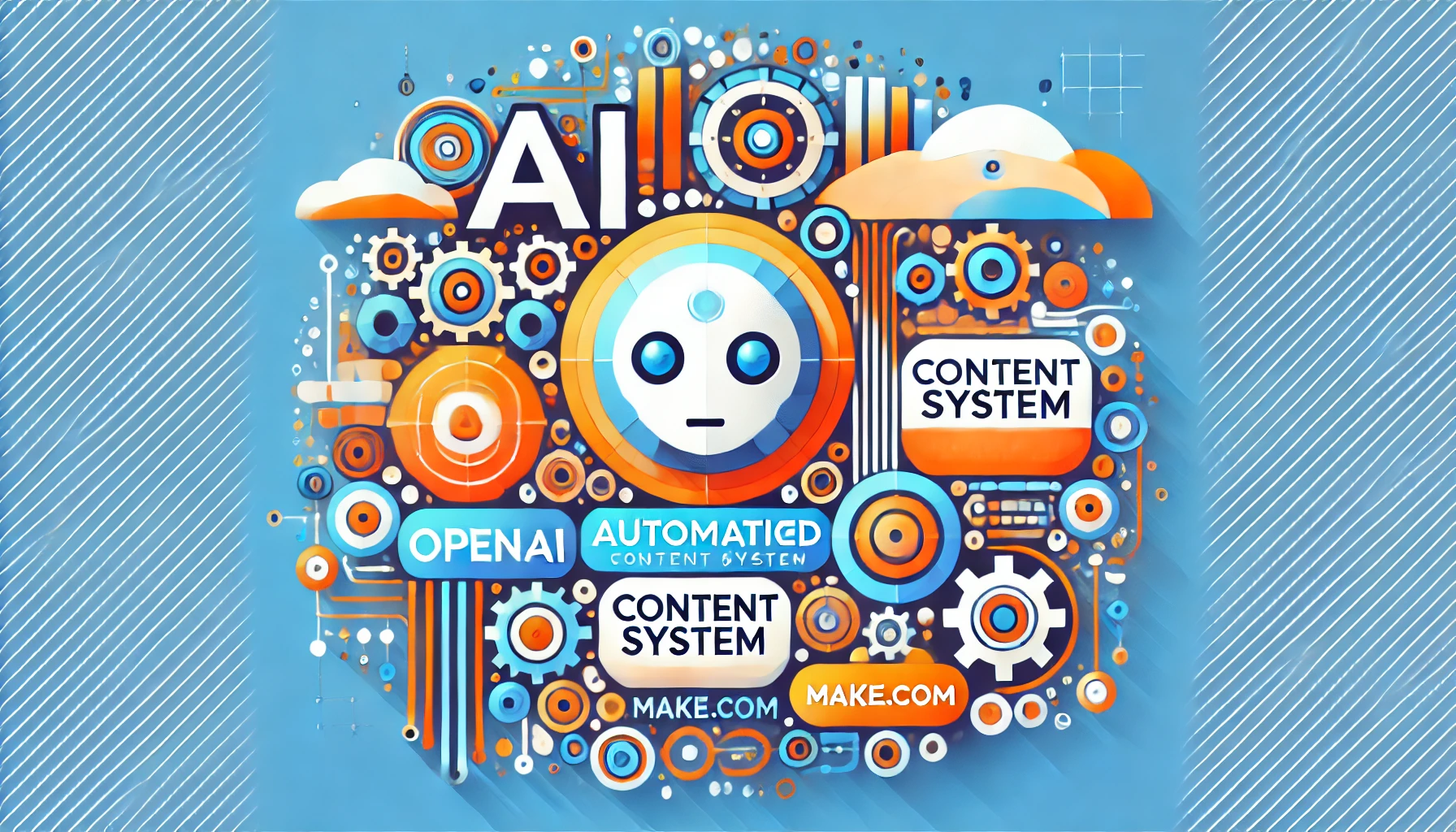Building a Robust Automated Content System: Leveraging OpenAI and Make.com for Efficient Content Creation
In today’s fast-paced digital landscape, content creation has become a cornerstone of successful online marketing strategies. However, producing high-quality content consistently can be time-consuming and resource-intensive. This is where automated content systems come into play, offering a solution that combines artificial intelligence with workflow automation. In this comprehensive guide, we’ll explore how to build an efficient automated content system using OpenAI’s powerful language models and Make.com’s versatile automation platform.
Understanding the Components: OpenAI and Make.com
Before diving into the process of building an automated content system, it’s crucial to understand the key technologies we’ll be working with.
OpenAI: The Power of Advanced Language Models
OpenAI is at the forefront of artificial intelligence research and development. Their language models, such as GPT-3 and GPT-4, have revolutionized natural language processing capabilities. These models can generate human-like text, answer questions, and even assist in creative writing tasks.
Key features of OpenAI’s language models include:
- Natural language understanding and generation
- Contextual comprehension
- Multilingual capabilities
- Adaptability to various writing styles and tones
For more information on OpenAI’s capabilities, visit their official website: OpenAI
Make.com: Streamlining Workflow Automation
Formerly known as Integromat, Make.com is a powerful automation platform that allows users to design, build, and automate workflows across various applications and services. Its intuitive visual interface makes it accessible to both technical and non-technical users.
Make.com offers:
- A wide range of pre-built integrations
- Custom API integrations
- Complex workflow design capabilities
- Real-time execution and monitoring
Designing Your Automated Content System
Now that we understand our primary tools, let’s outline the steps to build a robust automated content system.
1. Define Your Content Strategy
Before implementing any automation, it’s crucial to have a clear content strategy in place. Consider the following aspects:
- Target audience and their preferences
- Content types (blog posts, social media updates, newsletters, etc.)
- Publication frequency
- Key topics and themes
- Brand voice and tone
2. Set Up Your OpenAI Account
To leverage OpenAI’s language models, you’ll need to create an account and obtain API access:
- Visit the OpenAI website and sign up for an account
- Navigate to the API section and create a new API key
- Securely store your API key for use in your automated system
3. Create Your Make.com Account
Next, set up your Make.com account to begin building your automation workflows:
- Sign up for a Make.com account
- Familiarize yourself with the platform’s interface and basic concepts
- Explore available integrations and modules
4. Design Your Content Generation Workflow
With accounts set up, it’s time to design your content generation workflow. Here’s a basic structure to consider:
- Content Ideation: Use OpenAI to generate content ideas based on your predefined topics or keywords.
- Outline Creation: Leverage OpenAI to expand on the chosen idea and create a detailed outline.
- Draft Generation: Use OpenAI to generate a full draft based on the outline.
- Editing and Refinement: Implement a human review process or use additional AI tools for proofreading and refinement.
- SEO Optimization: Integrate SEO best practices into your content generation process.
- Publication: Automate the process of publishing content to your desired platforms.
5. Implement the Workflow in Make.com
Now, let’s implement this workflow in Make.com:
- Create a new scenario in Make.com
- Add a trigger: This could be a scheduled event or a manual trigger
- Integrate OpenAI API: Use HTTP modules in Make.com to send requests to OpenAI’s API
- Process OpenAI responses: Use JSON modules to parse and process the generated content
- Implement human review steps: Add manual task modules for human intervention where necessary
- Connect to publishing platforms: Integrate with WordPress, social media platforms, or email marketing tools for automated publishing
6. Fine-tune and Optimize
As you implement your automated content system, continuous optimization is key:
- Regularly review and refine your prompts for better results from OpenAI
- Analyze the performance of your generated content and adjust your strategy accordingly
- Stay updated with the latest features and capabilities of both OpenAI and Make.com
Best Practices for Automated Content Creation
To ensure the success of your automated content system, keep these best practices in mind:
- Maintain Quality Control: While automation can significantly speed up content creation, always prioritize quality. Implement robust review processes to ensure the content aligns with your brand standards.
- Diversify Content Types: Don’t limit your automation to just one type of content. Experiment with various formats like blog posts, social media updates, product descriptions, and more.
- Personalization is Key: Use data from your CRM or analytics tools to personalize content for different audience segments. Make.com’s ability to integrate with various data sources can be particularly useful here.
- Stay Compliant: Ensure your automated content system adheres to relevant regulations, such as GDPR for data protection and FTC guidelines for disclosure of AI-generated content.
- Continuously Learn and Adapt: The field of AI and automation is rapidly evolving. Stay informed about new developments and be ready to adapt your system accordingly.
Overcoming Common Challenges
As with any technology implementation, you may encounter challenges. Here are some common issues and how to address them:
- Content Inconsistency: If you notice inconsistencies in the generated content, refine your prompts and consider implementing additional review stages in your workflow.
- API Rate Limits: Be mindful of OpenAI’s rate limits. Implement proper error handling and queuing mechanisms in your Make.com scenarios to manage these limits effectively.
- Cost Management: Monitor your usage of both OpenAI and Make.com to ensure you’re operating within your budget. Optimize your workflows to minimize unnecessary API calls.
- Maintaining Brand Voice: Regularly audit your generated content to ensure it consistently reflects your brand voice. Fine-tune your prompts and consider using fine-tuned models for better alignment with your brand’s style.
Future Trends in Automated Content Creation
As we look to the future, several trends are likely to shape the landscape of automated content creation:
- Multimodal AI: Future systems may integrate text, image, and even video generation capabilities for more comprehensive content creation.
- Enhanced Personalization: AI models are likely to become even better at creating highly personalized content tailored to individual user preferences and behaviors.
- Improved Contextual Understanding: Future AI models may have an even deeper understanding of context and nuance, leading to more sophisticated and natural-sounding content.
- Ethical AI and Transparency: As AI-generated content becomes more prevalent, there will likely be an increased focus on ethical considerations and transparency in disclosing AI-generated content.
Conclusion
Building an automated content system with OpenAI and Make.com offers a powerful solution for efficient, scalable content creation. By carefully designing your workflow, implementing best practices, and continuously optimizing your system, you can significantly enhance your content marketing efforts while freeing up valuable time and resources.
Remember, while automation can greatly improve efficiency, the human touch remains crucial in ensuring the quality, relevance, and authenticity of your content. Use this automated system as a tool to augment and empower your content team, rather than replace human creativity and insight.
As you embark on this journey of automated content creation, stay curious, keep experimenting, and always prioritize delivering value to your audience. The future of content creation is here, and it’s more exciting than ever.
For more insights on data scraping and AI tools, check out our articles on data scrapers and OpenAI Custom GPTs. And don’t forget to explore more content on Quick Life Solutions for the latest in digital marketing and technology.

